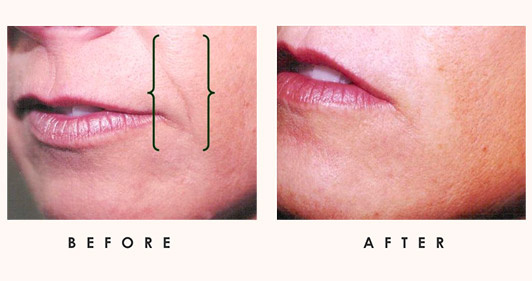Juvederm
Jump To
Juvéderm, an injectable facial filler, is used by cosmetic, dermatological, and plastic surgeons like Dr. Boerner to soften deep folds and reduce wrinkles in the faces of patients. The substance is largely hyaluronic acid, a substance normally found in the skin, muscles, and tendons of mammals.
Approved in June 2006 by the U.S. Food and Drug Administration, Juvéderm’s prime use is removing nasolabial folds, or “smile lines,” creases of skin which run from the corners of the nose to the corners of the mouth.
It is also used as a lip augmentation agent, and to fill in hollow places and scars on the face. However, all hyaluronic acid facial filler products are eventually absorbed by the body, usually within six to nine months, causing the patient to undergo repeat injections to maintain the younger look.
The Science Behind JUVÉDERM
Juvéderm works well for cosmetic and plastic surgery applications because hyaluronic acid can absorb up to 1,000 times its own weight in water, thereby adding new volume under the surface of sagging skin. Older faces take on more youthful aspects because hyaluronic acid is known to bind with collagen—the material that supports human facial skin—and elastin to move more basic nutrients into the skin.
When the University of Michigan organized a study on the dermal filler Restylane — a close chemical sibling of Juvéderm—researchers found that hyaluronic acid stretches cells in skin known as fibroblasts in a way that causes the skin to create new collagen. The new collagen helps decrease the appearance of facial creases and wrinkles. An unexpected—and welcome—finding cropped up: hyaluronic acid also seems to stop the breakdown of existing collagen.
Preparing For Your Session
The following instructions are typically provided to help patients prepare for their Juvéderm treatment session:
- Stop taking Advil, Motrin, and other NSAIDs, since they may trigger a variety of side effects that can interfere with your Juvéderm treatment. For example, NSAIDs are known for blocking blood platelets, which may lead to bruising following Juvéderm application.
- Avoid consumption of alcoholic beverages, since they have the potential of interfering with blood-platelet activity.
- Around 2 to 3 days before your Juvéderm treatment, avoid the use of creams, serums, and ointments. These topical products may act as skin irritants, because they contain retinol, retinoids, Retin-A, and glycolic acid.
- Stop taking supplements like Gingko biloba, ginseng, primrose oil, Vitamin E, garlic, and St. John’s Wort.
- Avoid bleaching, waxing, and tweezing the targeted areas.
- On the day of your Juvéderm treatment, thoroughly cleanse your face beforehand.
You will also be provided with specific instructions depending on your medical history.
The JUVÉDERM Treatment Session
A Juvéderm treatment session is quite quick and convenient, usually taking 20 minutes or less. At the start, the treatment sites are marked. The injections are then delivered. Juvéderm contains a local anesthetic called lidocaine, which numbs the treatment regions to any pain or discomfort.
After the treatment session, patients can go right back to their everyday schedule without any need for downtime or recovery time.
Potential risks and side effects
Patients, physicians and researchers say usual, expected side effects include temporary redness, pain and tenderness during injections and swelling and bruising at the injection sites. The more serious side effects include immune system reactions that result in facial lumps and bumps known as granulomas.



